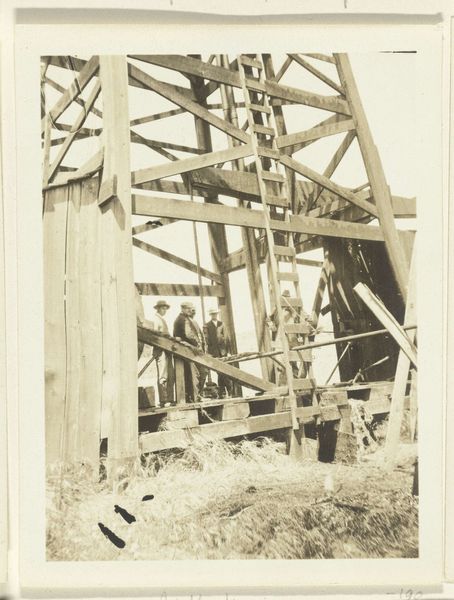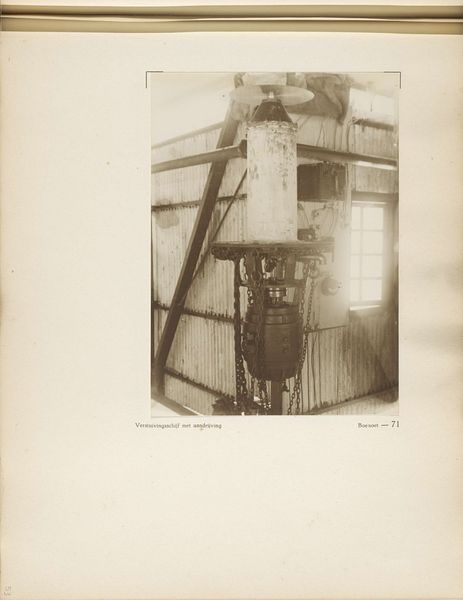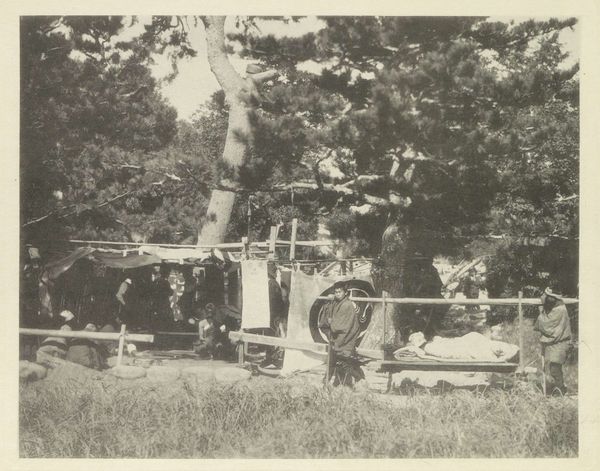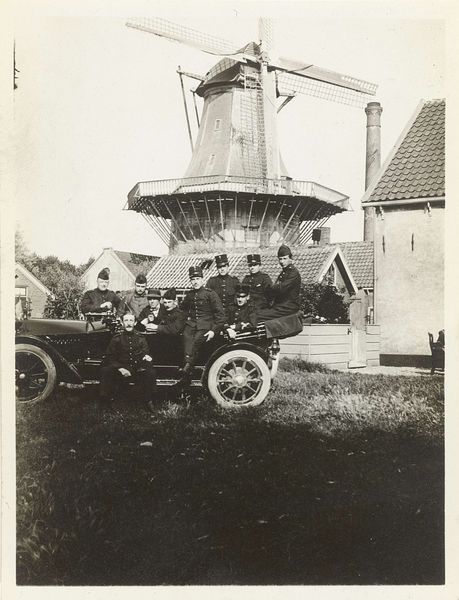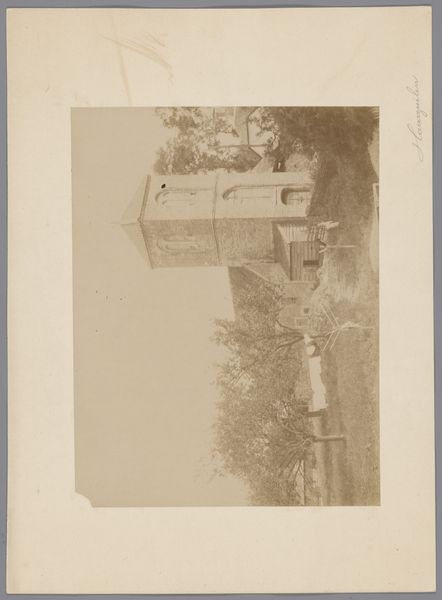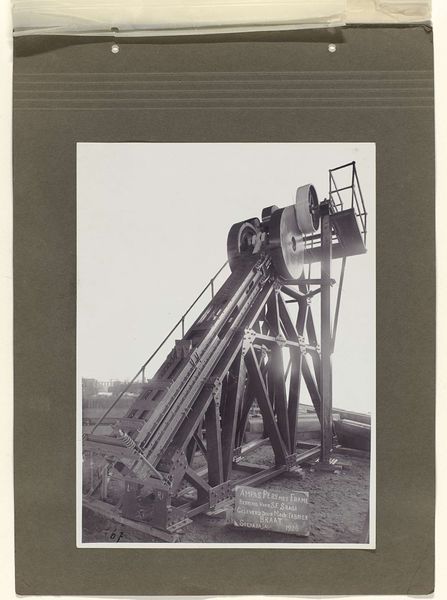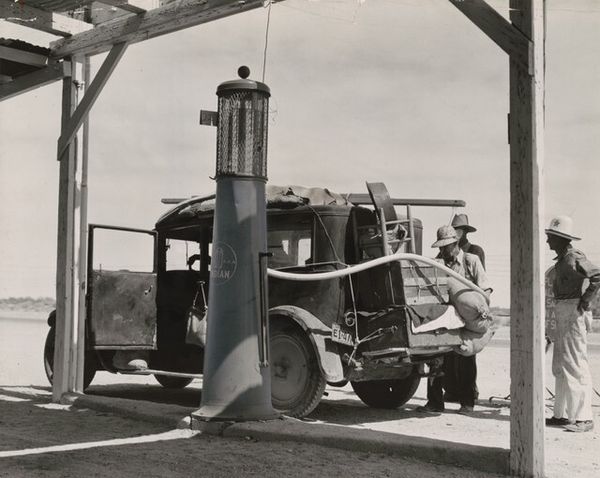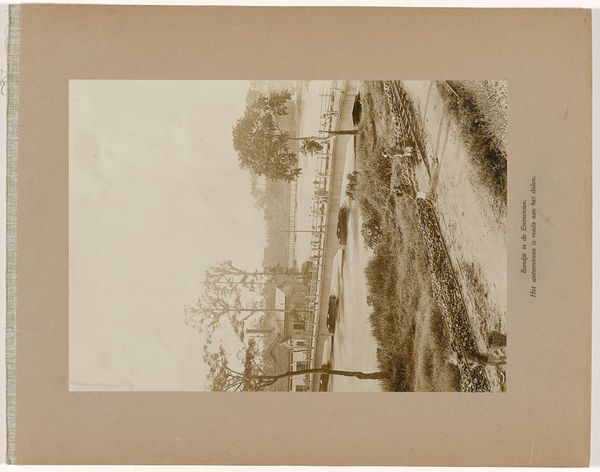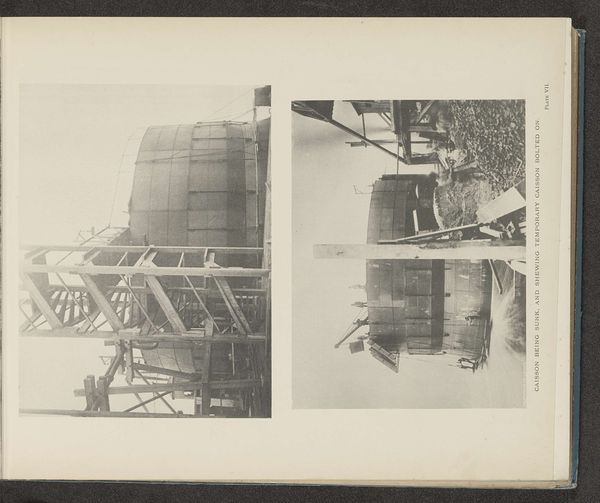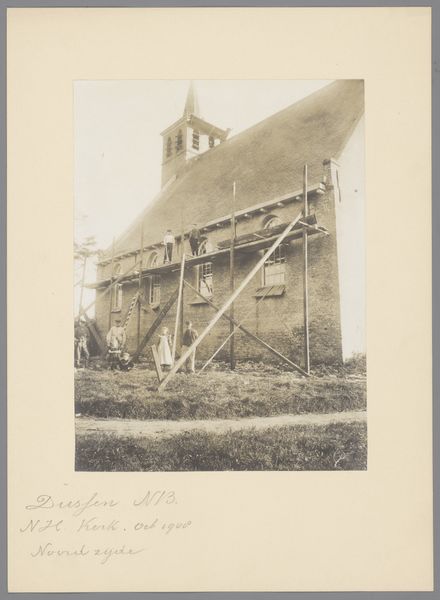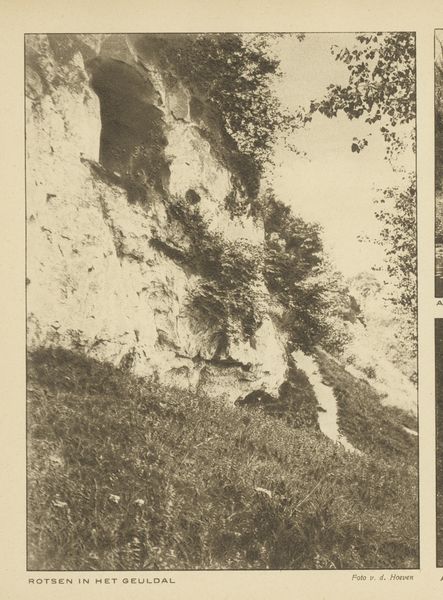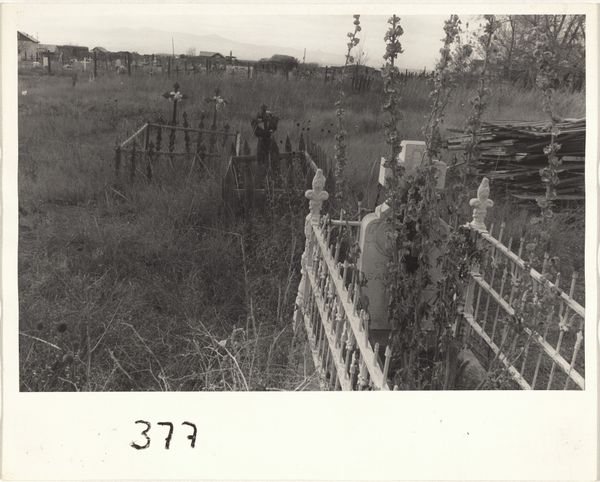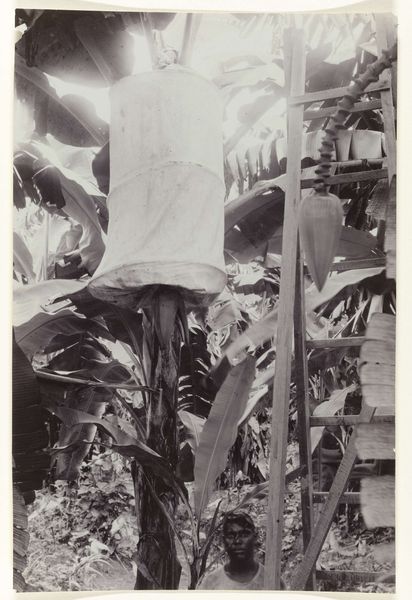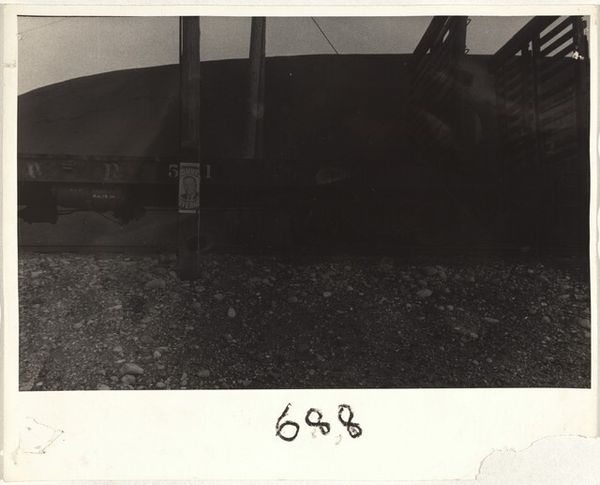
photography, gelatin-silver-print
#
landscape
#
nature
#
photography
#
gelatin-silver-print
#
realism
Dimensions: height 10 cm, width 7 cm
Copyright: Rijks Museum: Open Domain
Curator: The somber mood conveyed through this gelatin-silver print is immediate, isn't it? Editor: Absolutely. There’s a starkness in the contrast, typical of photography from this period. Formally, the photograph relies on a powerful vertical axis created by the watertower which bisects the composition. We should mention that this photograph, "Wehrmacht militair bij een watertoren", resides in the Rijksmuseum, dating potentially from 1940 to 1946, crafted by an anonymous artist. Curator: Anonymity here speaks volumes. Consider the potential reasons. It pushes me to think about the accessibility and use of photographic materials under wartime conditions. A soldier on the front line, say, documenting everyday occurrences through his own means and under institutional control, or lack thereof. Editor: That’s interesting. To my eye, the contrast is vital. The softness of the trees in the foreground against the harsh geometry of the watertower creates tension. I wonder what was its purpose at the time, given the presence of the military personnel depicted. Is it just a watertower or something else? Curator: Indeed. Given the probable timeframe, we need to remember that civilian infrastructure often took on dual roles. Also, note how the Wehrmacht soldier looms in the immediate foreground beside his transport. Editor: I agree. And it serves as a record of wartime experience, focusing on what seems almost banal if one were to ignore the very loaded signifiers embedded in this photograph: the uniform, the vehicle, the looming architectural structure. There is beauty in the greyscale. Curator: It truly encapsulates how war permeated daily life—affecting labor, resources, and seemingly neutral zones like this rural landscape. Editor: The picture freezes a particular historical reality and is a product born out of very unique social and political realities. A frozen image we can now, decades later, examine with greater analytical scrutiny. Curator: That close observation of the materials allows for a deep understanding that goes beyond simple representation. Editor: Well put. Examining the relationship between the soldier, the tower, the trees and the machine can reveal deeper insight into that moment in history.
Comments
No comments
Be the first to comment and join the conversation on the ultimate creative platform.
